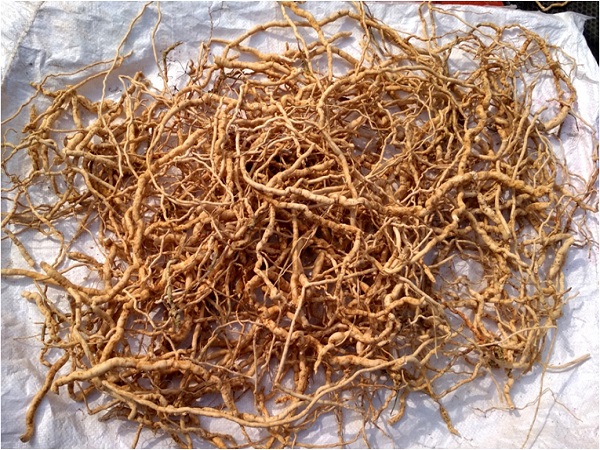
| Family | Apocynaceae |
| English Name | Holostemma |
| Malayalam Name | Atakodiyan |
| Tamil Name | Palaikkirai |
| Kannada Name | Arane Beelu, Jeeva haale |
| Telugu Name | Dudipala tige, Paalagurgi |
| Hindi Name | Charivel, Chhirvel, Ranimaoi |
| Sanskrit Name | Jivanti, Ark pushpi |
| Trade Name | JEEVANTI |
| Part Used | Roots |
| In Wild | Yes |
| Under Cultivation | Yes |
| Temperature | NA |
| Rainfall | NA |
| Farmers | NA |
| Traders | NA |
| Institution | NA |
| Individually | NA |
| State/Region | NA |
| District | NA |
| Nursery Information | NA |
| Yield | The yield of dry roots varies in the range 10–15 tonnes per hectare. |
| Economic of cultivation | NA |
| Quantitative quality standards | NA |
| Description | NA |
| Agro technology/Cultivation practices | Agro-ecological requirements The plant prefers a tropical humid climate and partially sunny locations. Sandy-loam soil is best for its cultivation. Planting-stock production Seed propagation : The crop is raised in a nursery in February. The seeds are sown on sand beds. Adequate moisture in beds is maintained by light irrigation. About 1.5 kg of seeds are required to raise a plantation in 1 hectare of land. The seeds are soaked in water for four to five hours before they are sown in raised beds in nursery. Partial shade is provided to the germinating seedlings. The seeds sprout in about 10 days. About one-month-old seedlings are transplanted in polybags of size 14 cm × 10 cm, which are filled with soil, sand, and well-decomposed FYM (farmyard manure) in the ratio 1:1:1. Polybags should be kept in shade and irrigated regularly. Seedlings are ready for planting in the field in May–June. Cultivation Field planting : The seedlings are transplanted in the main field in May–June just at the onset of monsoon, after about 30–45 days of transfer to polybags. An optimum spacing of 60 cm × 60 cm is maintained for the sole crop. This accommodates a crop stand of approximately 28 000 plants per hectare. The plant can be grown as a sole crop as well as an intercrop. Since it is a twiner, it has to be provided with trellises or some live support of tree or shrub. The light requirements of the intercrop must then be taken into consideration before deciding the intercrop species. When intercropped with another species, crop stand would be approximately 14 000. Manuring/Fertilization : No inorganic fertilizer may be used for the crop if sufficient FYM is applied as a basal dose (30 tonnes/hectare or 1 kg/plant). The plants need stakes as support in July–August. First weeding operation should also be carried out in July–August. Manual weeding twice at two and four months after planting is necessary to keep the crop weed-free. Irrigation : Dudhi bel is grown as a rain-fed crop during the monsoon period. It is irrigated with 5 cm water on alternate days after the cessation of monsoon. Pest and diseases : Spraying of 0.05% quinalphos effectively controls the attack by aphids, which is observed during the rainy season. |
| Harversting | The root parts are used as drug and it takes one to two years for its good development. The crop yield is maximum (400–450 kg/hectare of fresh roots) after about one year of planting. However, the crop quality reaches the peak only after 18 months, although the yield of fresh roots may be reduced to about 250 kg/hectare. Thus, keeping in mind quality considerations, the crop should preferably be harvested when it attains 1.5–2 years of age. Harvesting is done by digging the soil to collect the roots. |
| Processing | The roots are cleaned and cut into pieces of 10 cm length, dried in shade, and stored in gunny bags before sale within six months, after which the active constituents start degrading. |
| References | NA |

